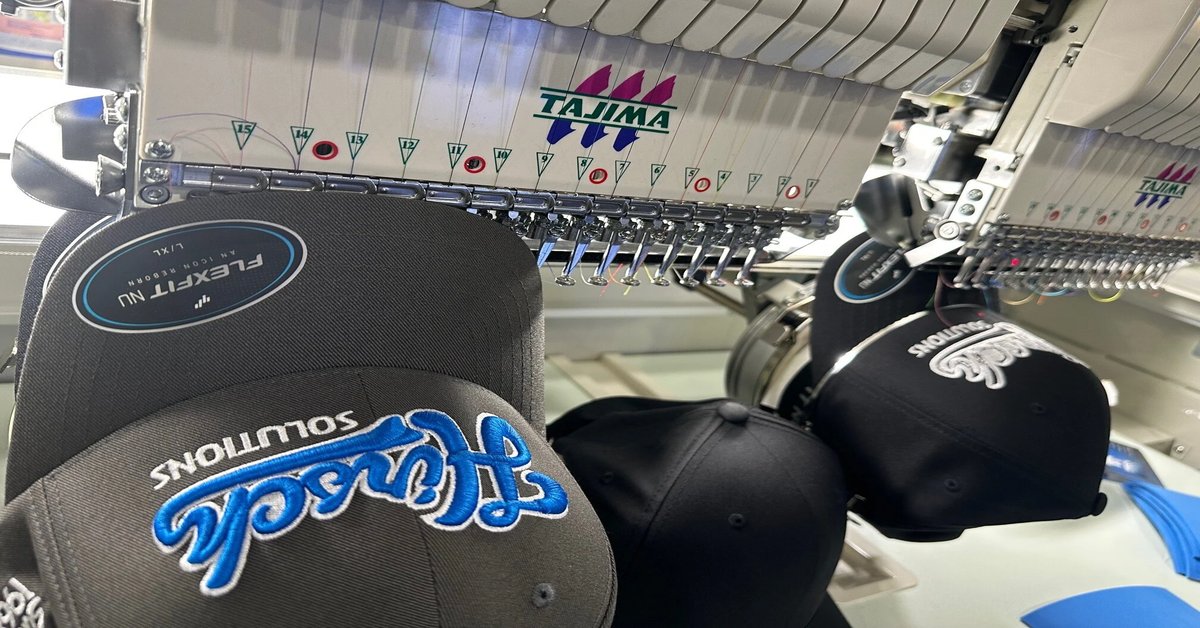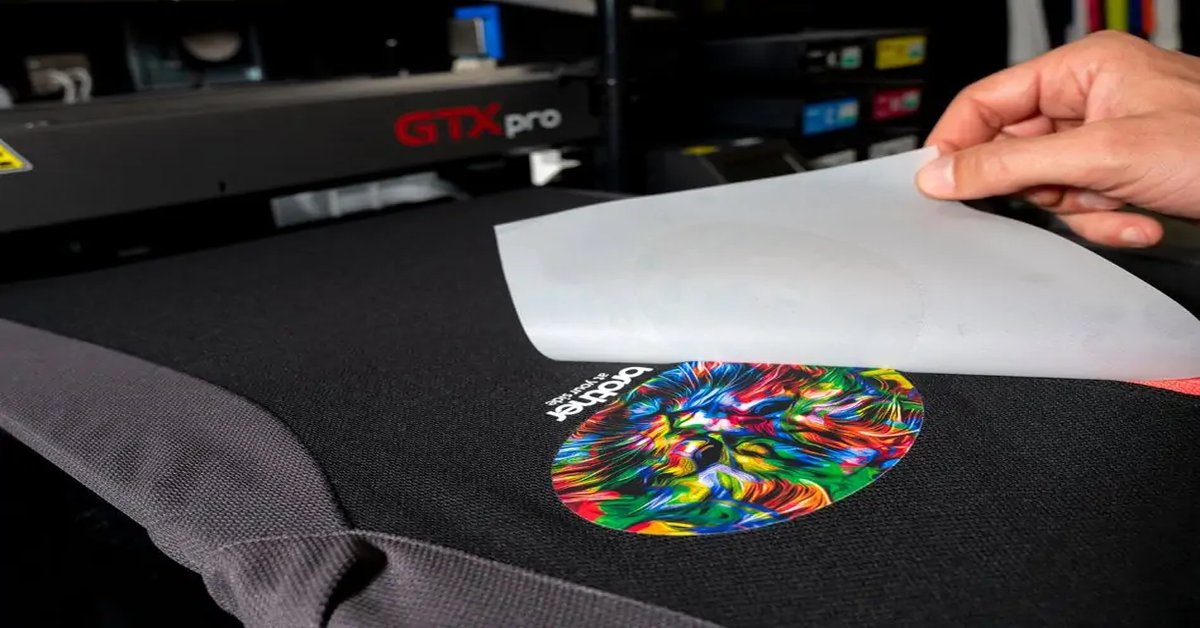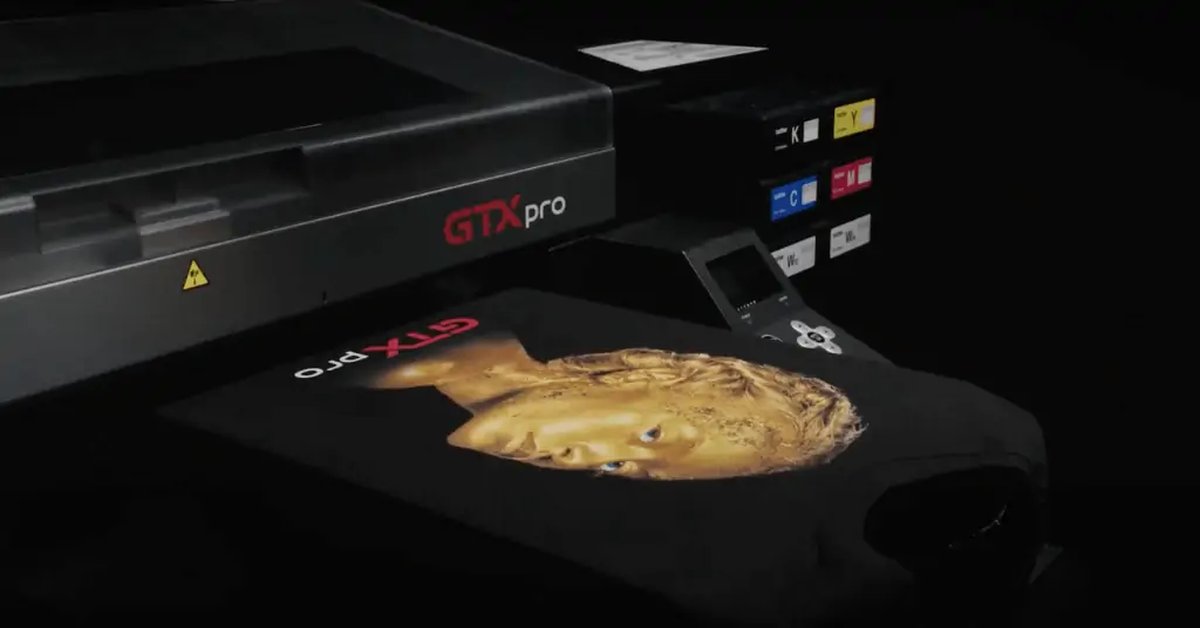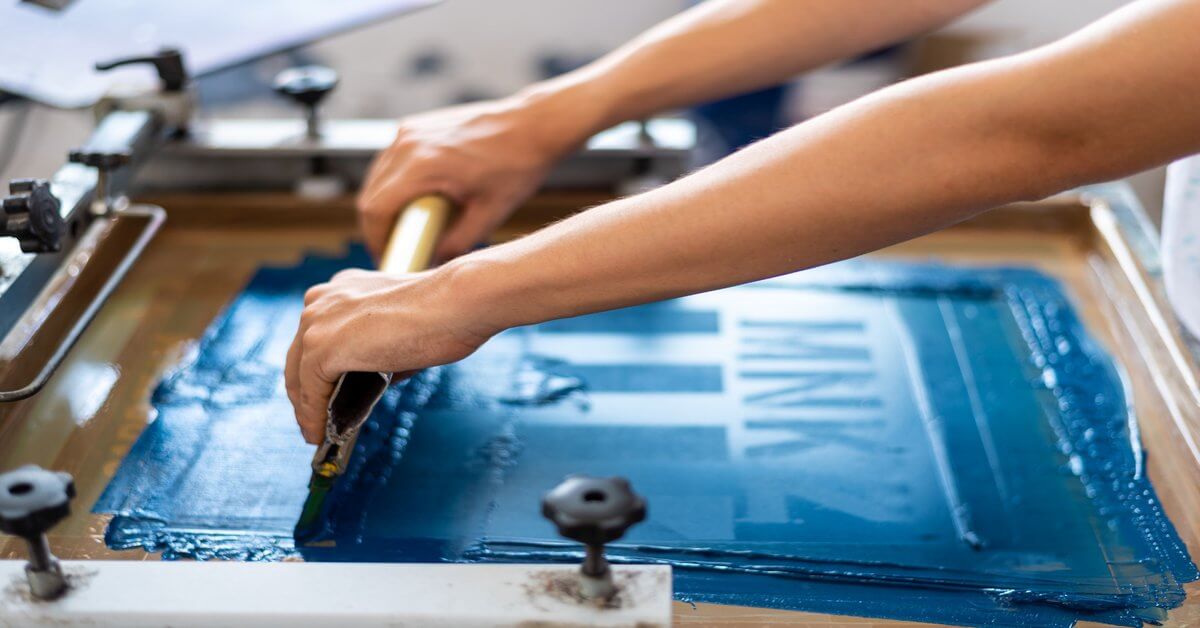Tu carrito está vacío
In order to provide you with a competitive quote, Please send us the following and we’ll get back to you as soon as we can:

Embroidery is one of the oldest and most enduring art forms, cherished for its intricate detail, artistic expression, and personal touch. This method of decorating fabrics using thread, needles, and a variety of stitches has been used for centuries to create beautiful designs on clothing, home décor, and accessories. In today’s world, embroidery has not only maintained its artistic heritage but also evolved into a versatile technique used in fashion, branding, and the crafting industry.
In this comprehensive guide, we will explore everything about embroidery, from its rich history to modern techniques, tools, and trends. Whether you're a hobbyist looking to try your hand at embroidery or a business owner wanting to incorporate custom embroidery into your product line, this guide will provide you with all the knowledge and practical insights you need.
Embroidery is the craft of decorating fabric or other materials using a needle to apply thread or yarn. This decorative stitching can also incorporate other materials such as beads, pearls, sequins, and even metal strips. Embroidery is often used to personalize garments, add decorative elements to home décor, and create intricate works of art.
The process can be done by hand or with the help of embroidery machines. Hand embroidery offers a personal, artistic touch, while machine embroidery provides speed, precision, and the ability to replicate designs across multiple items.
Embroidery is widely used in fashion, corporate branding (such as logos on uniforms), crafting, and textile art, making it a versatile technique with applications across industries.
Embroidery has a rich history that dates back thousands of years. Evidence of embroidered clothing and fabrics has been found in ancient civilizations across the globe, from China and Egypt to Persia and Greece. Here’s a brief look at the historical evolution of embroidery:
The earliest forms of embroidery can be traced back to ancient Egypt and China, where garments were often decorated with intricate stitch work. In China, silk embroidery was particularly prized, with designs inspired by nature, mythology, and spirituality.
During the Middle Ages, embroidery became a highly developed art form in Europe, particularly in religious and royal circles. The Bayeux Tapestry, created in the 11th century, is one of the most famous examples of medieval embroidery. In England, the term "Opus Anglicanum" (English work) was used to describe high-quality ecclesiastical embroidery produced between the 12th and 14th centuries.
The Renaissance period saw a shift in embroidery toward more secular and decorative purposes. Embroidered clothing, accessories, and home décor became symbols of wealth and status among the European elite. Techniques and styles flourished, including the development of goldwork and blackwork.
The advent of the Industrial Revolution in the 18th century changed the world of embroidery forever. The invention of mechanized embroidery machines made it possible to produce large quantities of embroidered goods quickly and at a lower cost, making embroidery more accessible to the general population.
In the modern era, embroidery continues to evolve. Today, the rise of digital embroidery machines and software has revolutionized the industry, allowing for precise, high-quality embroidery at scale. Despite the technological advancements, hand embroidery remains a cherished craft, practiced by artists and hobbyists around the world.
Embroidery comes in many different styles, each with its own set of techniques and materials. The following are some of the most popular types of embroidery:
Surface embroidery is the most common type of hand embroidery. This method involves stitching designs directly onto the fabric's surface using various stitches, such as backstitch, chain stitch, and satin stitch. This category encompasses many subtypes, including crewelwork, stumpwork, and ribbon embroidery.
Cross-stitch is a form of counted-thread embroidery where X-shaped stitches are used to create a design. This method typically involves working on a grid-based fabric like Aida cloth and is popular for creating detailed patterns and pictures.
Whitework embroidery involves using white thread on white fabric, creating a delicate, textured effect. Styles such as Hardanger and Broderie Anglaise fall into this category. This method is often used for table linens, handkerchiefs, and other home textiles.
Blackwork is a monochromatic embroidery style that originated in Spain and became popular in Tudor England. It involves stitching intricate geometric or floral designs using black thread on white fabric, though modern interpretations may use other colors.
Goldwork embroidery uses metal threads, typically made from gold or silver, to create luxurious designs. This style has historically been used for royal and religious garments due to its intricate detail and high material cost.
In appliqué embroidery, fabric pieces are sewn onto a larger fabric base and then embellished with decorative stitching. This method allows for the creation of colorful, multi-textured designs.
This form of embroidery relies on counting fabric threads to create precise patterns, as seen in styles like cross-stitch, Hardanger, and blackwork. It requires a specific type of fabric with a discernible weave (like linen or Aida cloth).
Free-motion machine embroidery allows the embroiderer to use a sewing machine to “draw” designs onto fabric using thread. This method involves moving the fabric under the needle in any direction to create intricate, freeform patterns.
This technique involves creating three-dimensional elements in embroidery designs. Padding, wire, and other materials are used to lift certain areas of the design from the fabric surface.
Both hand embroidery and machine embroidery are popular techniques, but they serve different purposes and have distinct advantages.
Hand embroidery is a labor-intensive process that involves stitching designs manually, one stitch at a time. It allows for intricate detail, customization, and creativity. Hand embroidery is perfect for creating one-of-a-kind pieces with a personal, artistic touch.
Pros of Hand Embroidery:
Cons of Hand Embroidery:
Machine embroidery uses computerized machines to stitch designs onto fabric quickly and with precision. This method is ideal for creating large quantities of embroidered items or for projects that require consistent, repeatable designs.
Pros of Machine Embroidery:
Cons of Machine Embroidery:
Before you start embroidering, it’s essential to have the right tools and materials. Whether you’re working by hand or with a machine, these are the basic items you’ll need:
Whether you’re doing hand embroidery or working with an embroidery machine, stitches are the building blocks of your designs. Here are some of the most commonly used embroidery stitches:
The backstitch is used to create continuous, straight lines of stitching. It’s perfect for outlining designs or adding fine details to your embroidery.
Satin stitch is a dense, smooth stitch used to fill in areas of a design. It creates a shiny, satin-like surface and is commonly used for letters or floral motifs.
The chain stitch forms a series of loops connected like a chain. It’s used for outlining or creating decorative borders and gives a more textured appearance than a simple outline.
The French knot creates small, raised dots of thread that add texture and detail. It’s often used for flower centers, eyes, or other small, rounded details.
In a split stitch, each new stitch is worked through the middle of the previous stitch, creating a slightly raised, textured line. This stitch is great for outlines and curved lines.
The lazy daisy stitch is a looped stitch used to create small petal shapes. It’s perfect for floral designs and adds a playful touch to your embroidery.
The running stitch is the simplest of all embroidery stitches. It creates dashed lines and is often used as a base stitch or for quilting-style effects.
Cross-stitch involves forming an "X" with two intersecting stitches. It’s used to create grid-based patterns and is particularly popular in counted-thread embroidery.
The bullion knot creates raised, textured rolls of thread. It’s commonly used for decorative details such as rose petals or intricate borders.
Hand embroidery is a relaxing and rewarding hobby, and it’s relatively easy to get started. Follow this step-by-step guide to begin your first hand embroidery project:
Start by choosing a simple design. Many beginners start with patterns available online or in embroidery kits. You can also sketch your design or print it out.
Use a water-soluble fabric marker or transfer paper to trace your design onto the fabric. Be sure to center the design in the area you want to embroider.
Place your fabric in the embroidery hoop by loosening the screw, laying the fabric over the inner ring, and pressing the outer ring down over it. Tighten the screw to secure the fabric, making sure it's taut but not stretched.
Cut a length of embroidery thread (about 18 inches). If you're using stranded cotton, separate the strands to get the desired thickness. Thread your needle and tie a knot at the end of the thread.
Begin stitching following your pattern or outline. Use basic stitches like backstitch for outlines and satin stitch for filled areas. Work slowly and carefully to keep your stitches even.
Once you’ve completed your design, secure the thread by making a small knot on the back of the fabric. Trim any loose threads, and gently wash the fabric to remove any remaining transfer marks.
Machine embroidery is a faster way to create intricate designs on fabric, but it requires careful setup and digitizing of your designs. Follow these steps to get started with machine embroidery:
You can either create your own design using embroidery software or purchase pre-made designs online. Ensure that the design is saved in a file format compatible with your embroidery machine, such as .pes or .dst.
Cut a piece of stabilizer slightly larger than your fabric and attach it to the back of the fabric using temporary adhesive spray or pinning. The stabilizer helps prevent puckering and stretching during embroidery.
Place your fabric and stabilizer in the embroidery hoop, ensuring that both are taut but not overly stretched. Attach the hoop to your machine according to the manufacturer’s instructions.
Thread your embroidery machine with the appropriate thread color. Make sure the bobbin is also correctly threaded with bobbin thread.
Transfer your design to the embroidery machine, either by USB or using the machine’s built-in software. Align the design on the fabric by adjusting the hoop position.
Press the start button on your machine, and it will begin stitching the design automatically. Monitor the machine to ensure smooth operation and change thread colors as needed.
Once the embroidery is complete, carefully remove the hoop from the machine and trim any loose threads. Remove the stabilizer according to the type used (tear-away, cut-away, or water-soluble).
The fabric you choose for your embroidery project plays a significant role in the overall appearance and durability of the design. Here are some common fabrics used in embroidery and their ideal uses:
Cotton is the most popular fabric for embroidery. It's lightweight, easy to work with, and durable. Quilting cotton, in particular, is perfect for hand embroidery projects.
Linen has a beautiful natural texture that complements hand embroidery. It’s suitable for both intricate and bold designs, making it a favorite for home décor projects like tablecloths, napkins, and pillowcases.
Aida cloth is a stiff, grid-patterned fabric commonly used for counted cross-stitch. Its clearly defined squares make it easy to follow patterns and count stitches accurately.
Canvas is a sturdy, durable fabric that works well for embroidery designs with bold lines and textures. It’s commonly used for tote bags, jackets, and other items that require a heavier fabric.
Silk provides a luxurious base for embroidery, but it can be tricky to work with due to its delicate nature. It’s best suited for experienced embroiderers or special projects that require a touch of elegance.
Felt is a non-woven fabric that’s easy to work with because it doesn’t fray. It’s a good choice for appliqué or simple hand embroidery projects.
Embroidery can be a meticulous craft, and even experienced embroiderers make mistakes. Here are some common mistakes and tips for avoiding them:
If your fabric is too loose in the hoop, it can lead to uneven stitches and puckering. Make sure the fabric is taut but not overly stretched before you begin stitching.
Incorrect thread tension can result in loose stitches or thread breakage during machine embroidery. Check your machine’s tension settings and make adjustments as needed to avoid thread issues.
Different fabrics and threads require different needles. Using the wrong type of needle can lead to fabric damage or uneven stitches. Make sure to select the correct needle for the fabric and thread you're using.
Forgetting to use a stabilizer when machine embroidering can cause the fabric to stretch, pucker, or distort during the stitching process. Always use an appropriate stabilizer for your fabric.
If your design is not properly aligned, it can ruin the look of your embroidery. Always take the time to center and position your design correctly before starting, whether you’re using hand or machine embroidery.
Embroidery is a versatile craft, and different techniques can be used depending on the final product. Here are some embroidery techniques tailored for specific applications:
When embroidering clothing, it’s essential to choose fabrics that can handle the stitching and wear. Stabilizers are crucial to prevent stretching, and stretchable fabrics may require special techniques like hoopless embroidery to avoid distortion.
Home décor items like cushions, tablecloths, and wall hangings are perfect for showcasing intricate designs. Consider using surface embroidery techniques like crewelwork or satin stitch to add texture and detail to your pieces.
Custom logo embroidery is a popular choice for businesses looking to add logos to uniforms, hats, or promotional items. Machine embroidery is the most efficient way to produce clean, professional logos with consistent results.
Appliqué is commonly used in quilting to add decorative fabric pieces to a quilt top. This technique involves stitching fabric shapes onto a larger fabric base and then embellishing them with embroidery stitches.
Children’s clothing often features playful designs, and embroidery can be used to personalize items like baby blankets, onesies, or dresses. Stretchable HTV or stretch embroidery techniques can help ensure comfort and durability.
Embroidery is more than just a craft for clothing or décor—its applications are truly limitless. Here are some creative ways embroidery is used today:
Custom embroidered patches are widely used for branding, sports teams, and fashion accessories. They can be sewn onto garments or bags, making them a versatile option for customization.
Embroidery has become a popular medium for creating textile art. Artists use embroidery to create intricate, framed pieces that combine traditional craftsmanship with modern themes.
Embroidery is perfect for creating personalized gifts. Items such as monogrammed towels, custom baby blankets, or embroidered handkerchiefs make thoughtful and one-of-a-kind presents.
Denim jackets and jeans are commonly adorned with embroidered patches, floral designs, or custom motifs. Hand and machine embroidery can both be used to add character and style to denim garments.
Embroidery can also be used to create unique accessories like embroidered necklaces, earrings, or handbags. Beads, sequins, and metallic threads are often incorporated to add texture and shine to these pieces.
Embroidery is a profitable and in-demand service for customizing garments, promotional items, and accessories. Here’s how to start your own embroidery business:
Decide what type of embroidery products or services you want to offer. Will you focus on custom apparel, corporate logos, or home décor? Narrowing down your niche will help you target the right customers.
Purchase the necessary equipment, such as embroidery machines, software, hoops, and threads. If you’re planning to scale your business, consider investing in a multi-needle machine for faster production.
Create sample designs and embroidered products to showcase your skills. Take high-quality photos of your work to use in your marketing materials and online shop.
Use social media platforms like Instagram, Facebook, and Pinterest to promote your embroidery business. You can also set up an online store through Etsy or your own website to reach a larger audience.
Personalization is one of the main advantages of embroidery, so offer customization services where clients can upload their own designs or choose from a selection of fonts and styles.
When choosing a decoration method for garments or textiles, it’s important to consider both the cost and the final product. Here’s a comparison of embroidery with other popular decoration methods like screen printing and direct-to-garment (DTG) printing:
Embroidery is an ancient craft that has adapted and evolved with modern technology. The future of embroidery is likely to see even more innovation, particularly in the areas of sustainability, automation, and artistic expression:
With a growing focus on sustainability, embroidery threads and fabrics made from organic, recycled, or eco-friendly materials are becoming more popular. There is also a push toward minimizing waste in both hand and machine embroidery processes.
As technology advances, embroidery machines are becoming more sophisticated, with features like automatic thread changes, Wi-Fi connectivity, and digitized design libraries. These advancements will continue to improve efficiency and creativity in commercial and home embroidery.
Embroidery is increasingly being combined with other textile decoration techniques, such as screen printing, digital printing, and laser cutting. This fusion creates new possibilities for design and expands the potential applications of embroidery in the fashion and art worlds.
Embroidery is a timeless and versatile craft that continues to captivate people across the world. Whether you’re creating personalized gifts, custom apparel, or intricate works of art, embroidery offers endless possibilities for creativity and self-expression. From traditional hand stitching to modern machine techniques, embroidery remains one of the most cherished methods of textile decoration.
By understanding the different types of embroidery, the tools and techniques involved, and the applications available, you can embark on your embroidery journey with confidence. Whether you’re a hobbyist, artist, or entrepreneur, the beauty of embroidery lies in its ability to transform the ordinary into something extraordinary.


